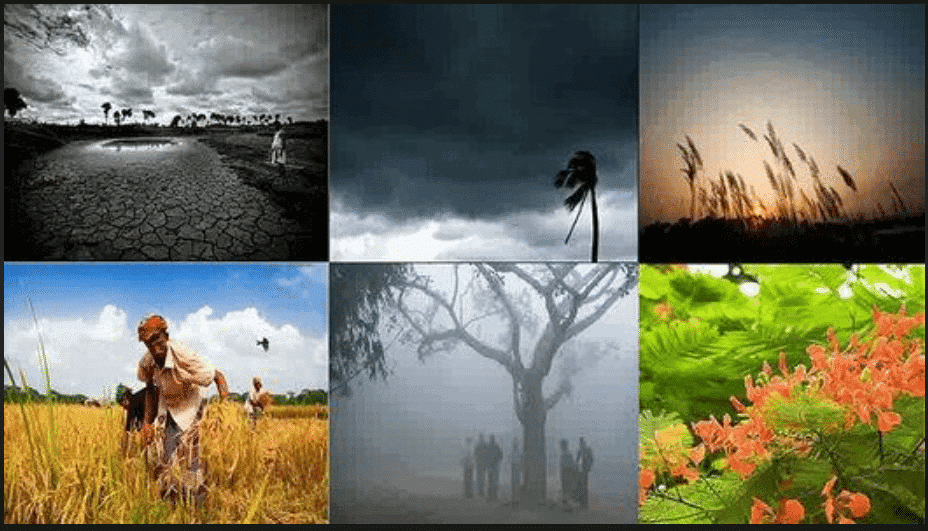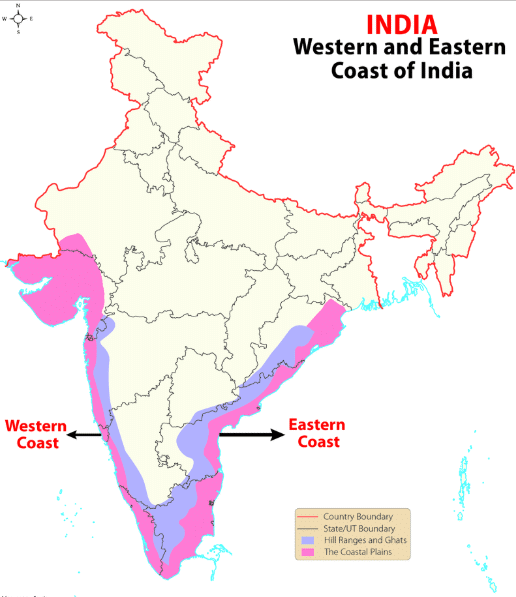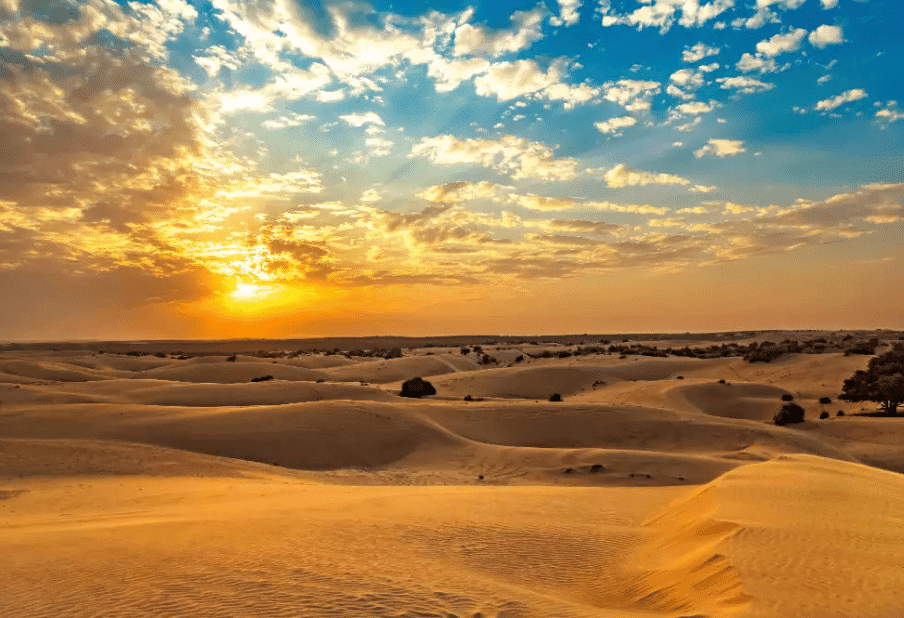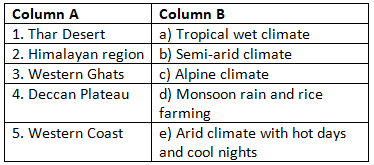CBSE Class 7 Social Science Chapter 3 Climates of India Worksheet - Free Download
| Table of contents |

|
| Multiple Choice Questions (MCQs) |

|
| Fill in the Blanks |

|
| Very Short Answer Questions |

|
| Short Answer Questions |

|
Multiple Choice Questions (MCQs)
Q1: What is the main difference between weather and climate?
a) Weather is the average condition over many years, while climate is the short-term condition.
b) Weather is the short-term condition, while climate is the average condition over many years.
c) Weather occurs only in tropical areas, while climate is for the entire planet.
d) Weather and climate are the same thing.
 Weather of India
Weather of India
Q2: Which region of India experiences an alpine climate?
a) Western Ghats
b) Himalayan region
c) Ganga Plains
d) Thar Desert
Q3: Which of the following is not a factor affecting India's climate?
a) Latitude
b) Altitude
c) Longitude
d) Proximity to the sea
Q4: What does the term 'microclimate' refer to?
a) A region with a climate similar to the surrounding areas.
b) A small area with a unique climate different from its surrounding areas.
c) A type of tropical climate.
d) A specific seasonal weather pattern.
Q5: Which of the following is a primary characteristic of the Thar Desert?
a) Cold winters with snowfall
b) Hot days with cool nights
c) Tropical wet climate
d) Mild summers and winters
Q6: What is the main reason for the monsoon rains in India?
a) Winds from the Arctic
b) Wind patterns caused by pressure differences between land and sea
c) Heavy snowmelt from the Himalayas
d) Winds from the Bay of Bengal only
Q7: Which climate type is found in the Western Coast of India?
a) Arid climate
b) Tropical wet climate
c) Alpine climate
d) Temperate climate
 Coasts of India
Coasts of India
Q8: What is the role of the Himalayas in India’s climate?
a) They block cold desert winds from Central Asia.
b) They warm the air in the northern plains.
c) They prevent rainfall in the southern parts.
d) They help control the monsoon winds.
Q9: Which region of India is most affected by the Northeast Monsoon?
a) Western Ghats
b) Deccan Plateau
c) Eastern India and Southern Peninsula
d) Himalayan region
Q10: Which of the following cities experiences a larger range of temperatures between summer and winter?
a) Mumbai
b) Delhi
c) Chennai
d) Kolkata
Fill in the Blanks
Q1: The weather of India is greatly influenced by the __________ system.
Q2: The __________ climate is found in the Himalayan region, where temperatures stay below freezing in the highest peaks.
Q3: __________ is the term for the small area’s unique climate that differs from its surrounding region.
Q4: The __________ Desert has hot days and cool nights, with very little rainfall.
Q5: The __________ Monsoon brings rain to the eastern and southern parts of India during winter.
Q6: The __________ climate in India is ideal for growing rice and spices due to heavy monsoon rainfall.
Q7: The __________ Plateau experiences a semi-arid climate with hot summers and mild winters.
Q8: __________ is the term for the rise in global temperatures caused by the accumulation of greenhouse gases.
Q9: The __________ ranges influence rainfall by blocking moist air coming from the sea.
Q10: __________ refers to the average weather pattern in an area over many years.
 Thar Desert
Thar Desert
Very Short Answer Questions
Q1: What does the word "monsoon" mean?
Q2: What is a microclimate?
Q3: Which climate is found in the Deccan Plateau?
Q4: What causes the monsoon rains in India?
Q5: Which region has the coldest climate in India?
Short Answer Questions
Q1: What is the difference between weather and climate?
Q2: How does altitude affect India’s climate?
Q3: Why are the Western Ghats important in determining the climate of India?
Q4: What role does latitude play in India’s climate?
Q5: How does proximity to the sea influence the climate?
Match the Following
(Match Column A with the correct option in Column B)

For Worksheet Solutions, go to Worksheet Solutions: Climates of India
|
1 videos|107 docs
|
FAQs on CBSE Class 7 Social Science Chapter 3 Climates of India Worksheet - Free Download
| 1. What are the main climatic zones of India? |  |
| 2. How does the monsoon affect the climate of India? |  |
| 3. What are the major seasons experienced in India? |  |
| 4. How does altitude affect the climate in different regions of India? |  |
| 5. What factors contribute to the diversity of climates in India? |  |





















